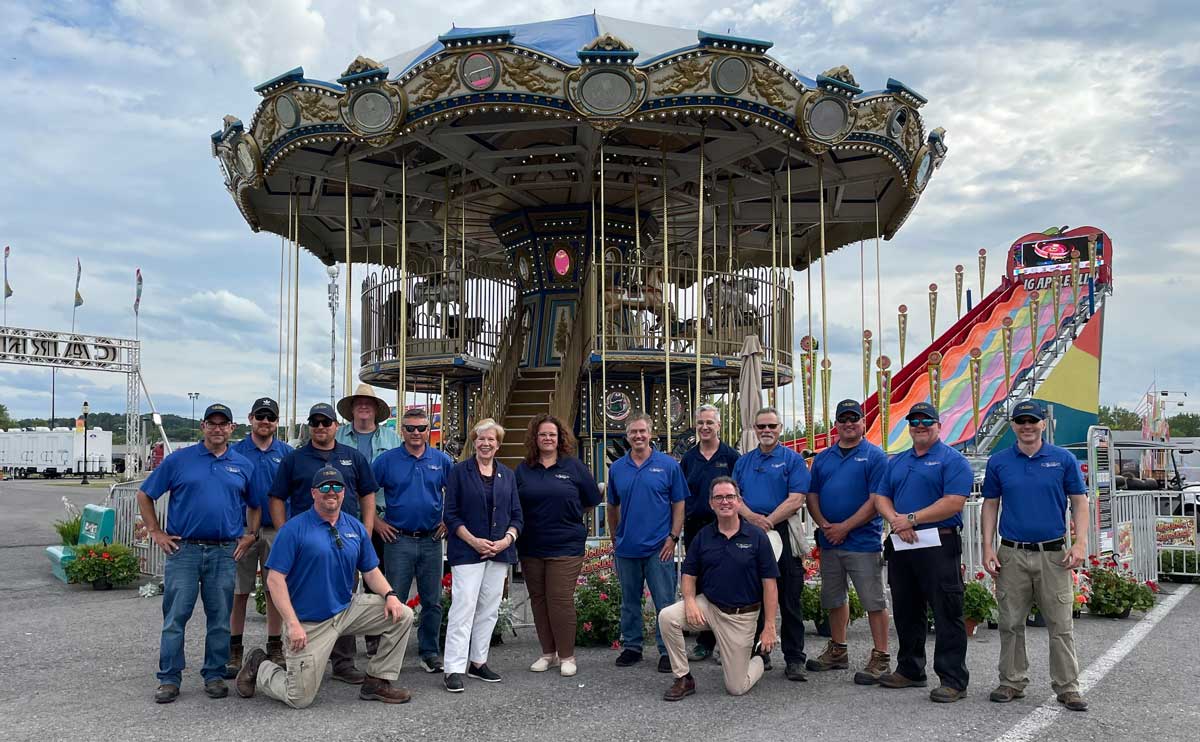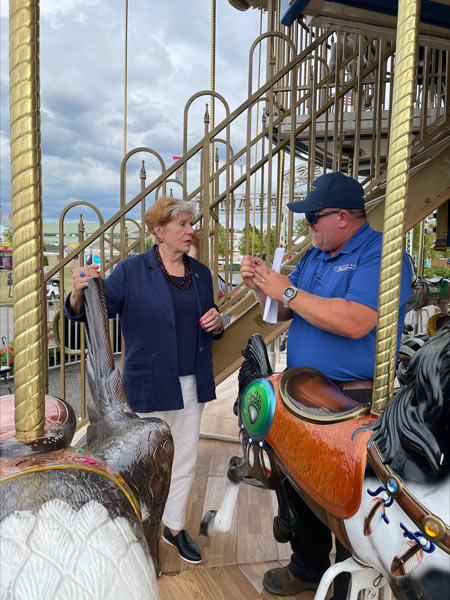

October 7, 2025 — Before a visitor steps onto a ride, whether at a county fair, a permanent park, or the annual New York State Fair in Syracuse, a safety and health inspector from the Department of Labor (DOL) has seen and inspected that ride to ensure their safety.
Matthew Leonard, a PEF member since 2008, is a safety and health inspector with the DOL’s Industry Inspection Bureau. Throughout the summer, he spent many days in the field, inspecting rides.
He explained the different things inspectors look at and how in depth they go to make sure you and your loved ones can ride with confidence. This includes looking at manufacturer assembly manuals and engineering drawings.
“We start by looking at the amusement device on the trailers they arrive on, sometimes days before the fair opens,” Leonard said. “We examine the structure of the device, inspecting the steel, welds, fasteners, electrical wires and cables, steel cables, hydraulic hoses/cylinders, gears, motor, and other components.”
Once the rides are assembled, the inspection continues.
“We watch the device ‘spin’ and make sure it operates as designed,” he said. “We are checking to ensure the control function works correctly (starts and stops), the brakes engage (if required), the device runs at the proper speed, and the operator knows how to safely run the device.”
Possible problems inspectors find include bad seat belts, missing hardware, wrong hardware, cut electrical wires, and some sharp objects.
“Sometimes you may even find a crack in steel, a broken weld, or bad brake,” Leonard said.
While some rides are decades old, and come with the challenges of age, technology is advancing, and ride controls are improving.
“The new devices have soft-start controls, computer-controlled interfaces, and various new safety sensors,” he said. “Soft-start controls are used to manage the initial application of power to electric motors, resulting in a smooth, gradual startup. This reduces electrical and mechanical stress, protecting both the machinery and the passengers.
“These features also help eliminate any human operator errors,” he said. “A lot of the newer rides are manufactured in other countries and are all designed to conform to our safety standards.”
For permanent rides, like those found at amusement and water parks, Leonard said there are yearly inspections and permitting requirements.
“The inspectors typically go back and perform operational inspections during the season to make sure no issues have occurred,” he said. “In the fall, we also inspect haunted houses and amusement devices at pumpkin farms or fall festivals.”
Leonard began his career at DOL as a prevailing wage investigator – but knew he wanted to get out in the field.
“The best part of my job now is helping make sure the public is safe,” he said. “The amusement device owners we regulate truly want to see us; they want us to help them become safer and for us to be a second set of eyes. They are typically a pleasure to work with, and I’m thankful for that.”
Health and safety inspectors at DOL are highly educated, training with outside organizations like the National Association of Amusement Ride Safety Officials, Lift Maintenance Seminar for ski lifts, and various New York State Code classes. They also do more than just inspect amusement rides.
“Many people have no idea what this department does daily,” Leonard said. “In addition to inspecting amusement rides, we are also responsible for inspection and enforcement in a variety of other industries. Every day is different.
“In one day, we could be inspecting amusement devices, next we’re on to an explosives inspection, then off to a construction site inspecting certified crane operators, and then finish the day inspecting a car wash. The next day we might be looking at a ski lift or a place of public assembly, like a movie theater. It’s very rewarding to know that you, along with our safety partners, keep people safe.”

